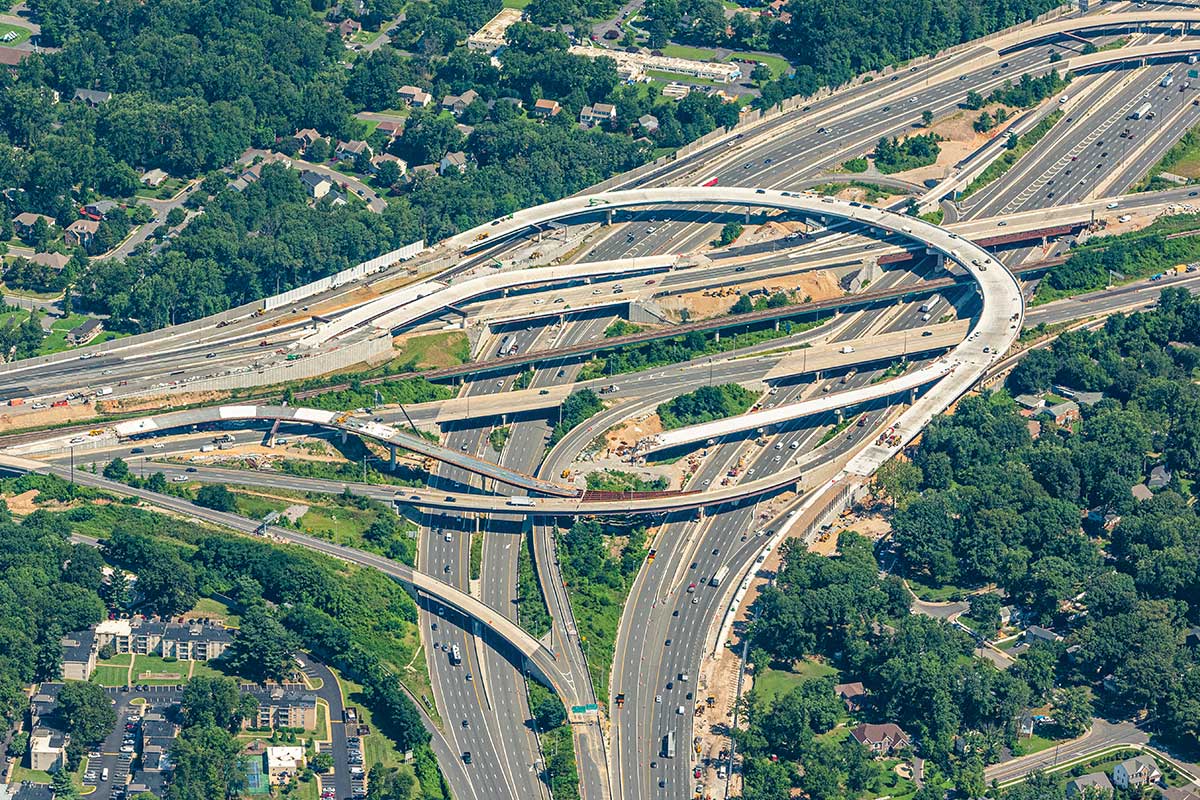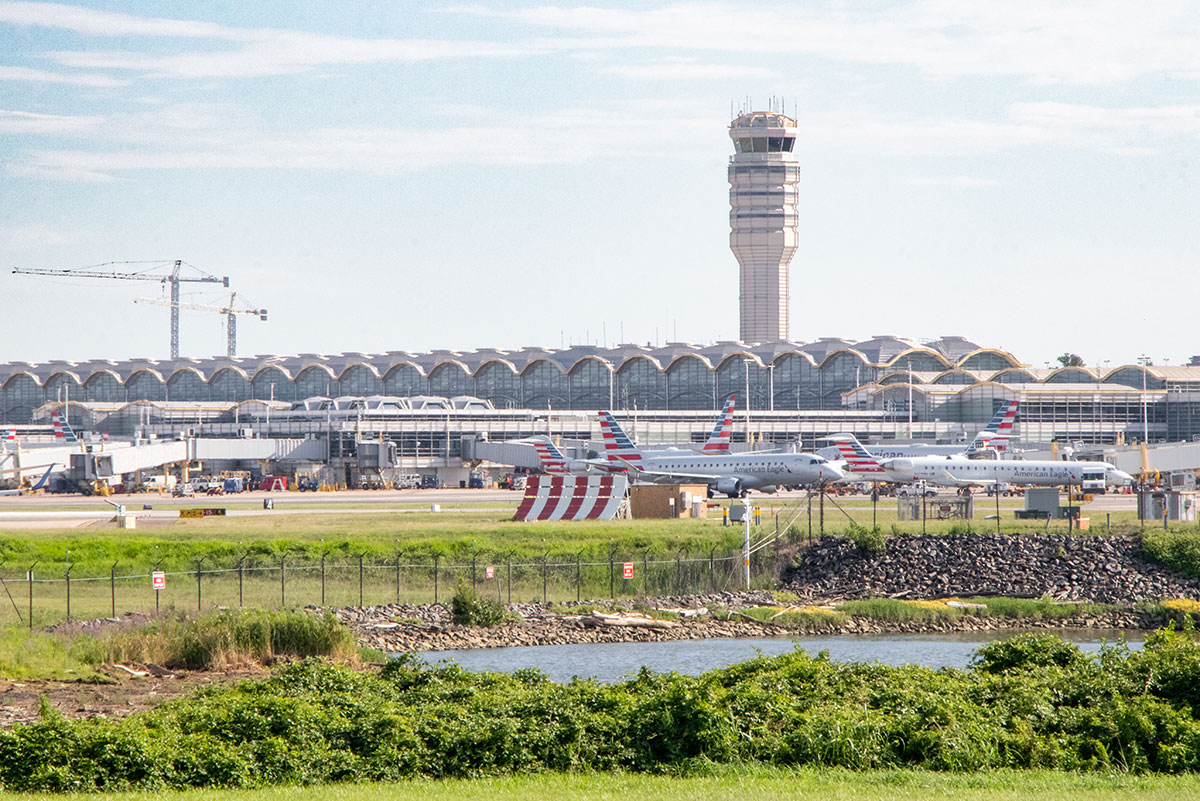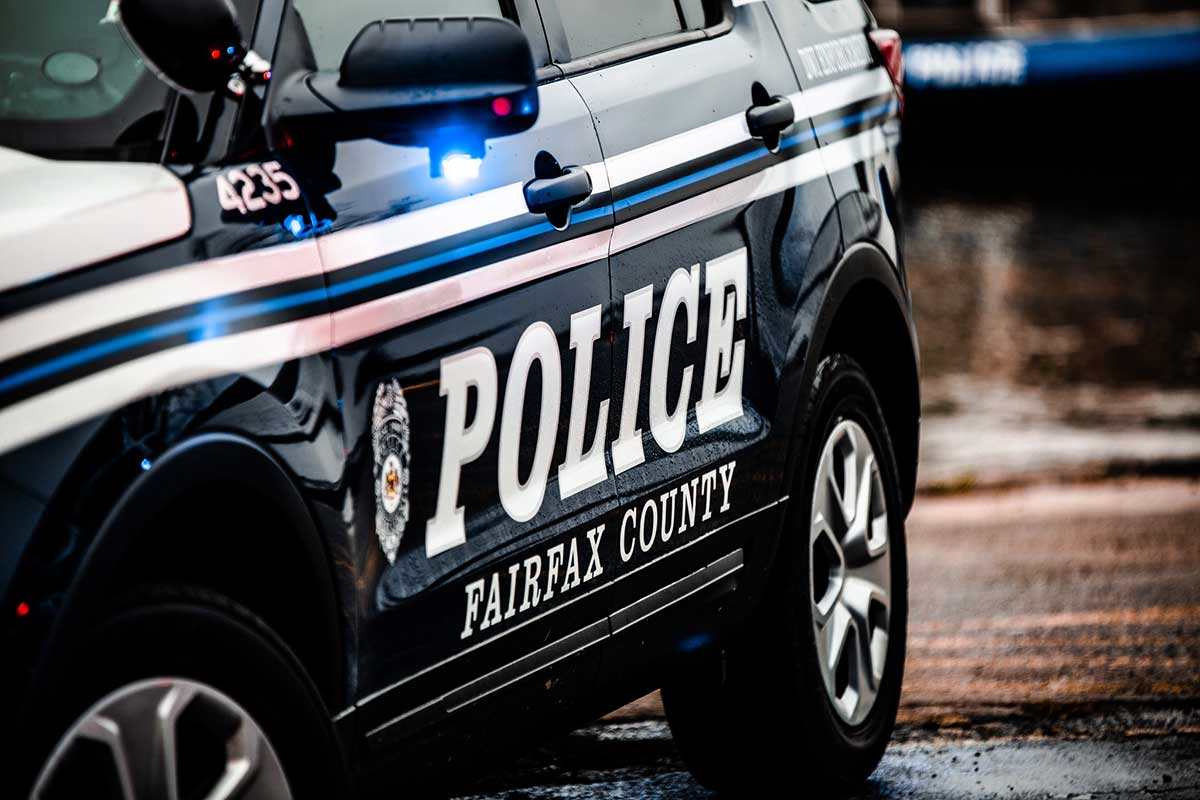In a recent conversation with an out-of-town friend, Fairfax County resident Barbara Osgood let slip words that demonstrate just how much her Fair Lakes neighborhood has changed since she first moved to Fairfax County in 1980.
“I said to my friend, ‘It’s starting to look like Los Angeles,’” says Osgood.
She is referring to the impact that ever-widening roads — including both Route 50 and Interstate 66 near her home — have had on the area.
“When you drive 66 now from where I am in Fair Lakes into the Beltway, it is lined almost entirely with sound walls,” she says. “It’s like you’re driving through a tunnel.”
Northern Virginians have been living through a seemingly endless cycle of roadbuilding in recent years, as local and state transportation planners continue to try to build a driving infrastructure that meets the needs of the area’s growing population. Major ongoing projects include:
- New high-occupancy toll (HOT) lanes on I-66 from I-495 west to Gainesville. The lanes from Centreville to Gainesville opened in September, and the remainder of this $3.7 billion project, dubbed Transform 66, opened in November.
- The I-495 HOT lanes northern extension, which will take the existing lanes from the Dulles Corridor interchange to the George Washington Memorial Parkway near the American Legion Bridge. Construction on this $600 million project, 495 NEXT, started in March, and the lanes are expected to open in 2026.
- Ongoing work to extend the I-95 HOT lanes 10 miles south from Exit 143 in Stafford County to Exit 133 near Fredericksburg. This $565 million project is targeting a late 2023 opening, although new lanes intended to help manage traffic at the end of the HOT lanes have already opened.
In addition to these “megaprojects,” as the Virginia Department of Transportation (VDOT) refers to them, the Northern Virginia Transportation Authority (NVTA) in July adopted a six-year plan that funds $625 million worth of improvements across 20 projects in the region, from road widenings to bike and pedestrian trails to Metrorail station and interchange upgrades. These projects were selected by the authority from more than $1.2 billion worth of transportation improvements requested by Northern Virginia localities.
With the perceived need more than doubling the funds available, some in the region are asking: Can Northern Virginia ever build its way out of traffic congestion?
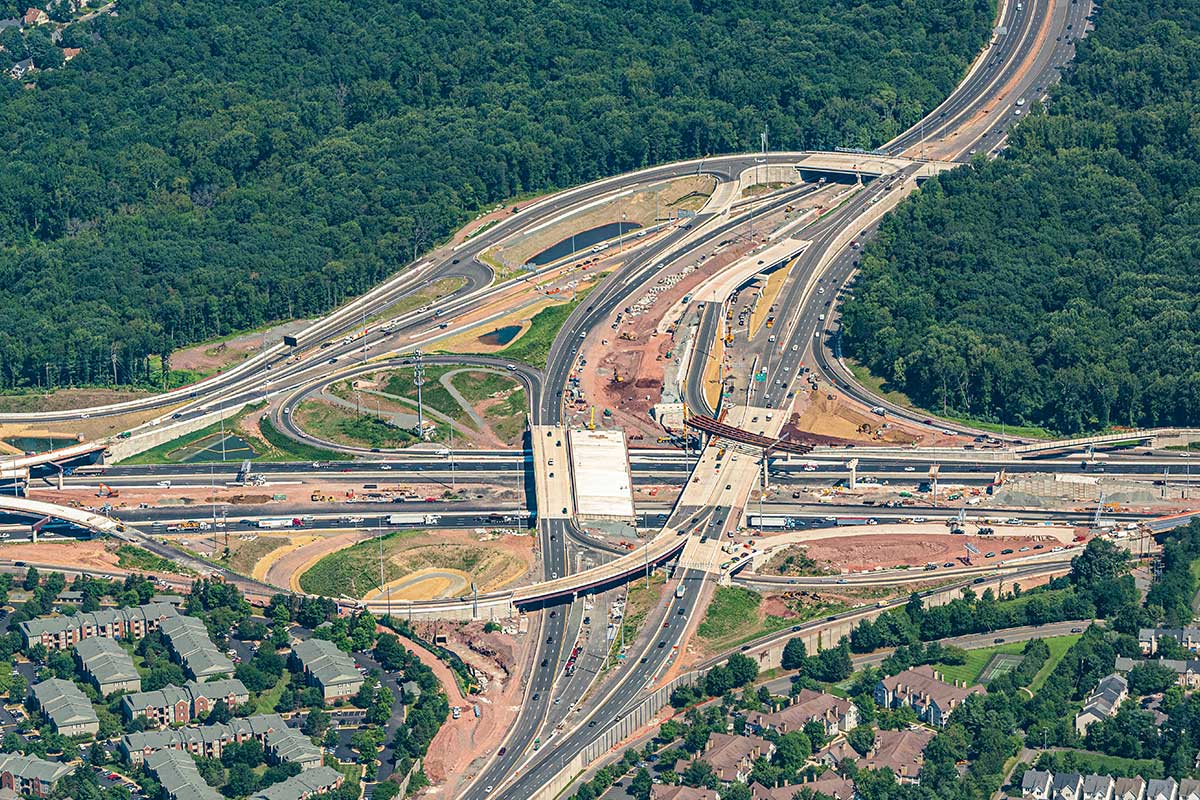
For Whom the Traffic Tolls
Taming traffic is a balance between right-sizing roads and reducing the number of vehicles using those roads. On Northern Virginia’s interstate corridors, VDOT has leaned heavily on the concept of HOT lanes to try to accomplish this.
The newly opened HOT lanes on I-66 outside the Beltway are free to cars with three or more passengers (the previous standard was two passengers), and private operator I-66 Express Mobility Partners sets variable tolls that rise and fall with traffic demand. The operator must set prices so that drivers maintain an average minimum speed of 55 mph in the lanes.
The I-95 express lanes work similarly and are operated by Australian infrastructure firm Transurban.
Robert Ridgell, VDOT project manager for the Fredericksburg express lanes extension, says that building HOT lanes instead of adding general traffic lanes is a strategy aimed at combatting the phenomenon of induced demand — where wider roads only draw more drivers.
“They are designed to encourage high-occupancy vehicles and transit use,” he says. “Whereas if you went out there and added a non-toll lane, induced demand would tell you that you are creating additional capacity, and sooner or later, that will fill up.”
This is why both the I-95 and I-66 HOT lane extension projects have included the creation of thousands of additional parking spaces in commuter lots to help travelers access transit and ride-sharing options.
“The focus is on moving people, not so much vehicles,” says Susan Shaw, VDOT’s director of megaprojects for Northern Virginia. “The thought is that we are encouraging people to carpool, vanpool, and use transit in those lanes because they will be congestion-free. We did not build all the capacity needed for all the cars that want to drive on that road or all the traffic that wants to be on that road. We would have too big of a footprint, and we don’t accept that kind of impact to surrounding communities.”
The tolls for single drivers who want to use the express lanes also cause other changes in driver behavior. For example, Maggie Van Arsdell, a public relations professional who recently moved to Ashburn from Old Town Alexandria, has negotiated to telecommute most days of the week and shifts her schedule to drive during off-peak hours to her Georgetown office to avoid tolls and traffic.
“If it weren’t for this greater acceptance for hybrid work that came during the pandemic, there is no way my family would have settled in Loudoun County,” she says.
Other drivers have less flexibility. Evgeny Godlevsky and his wife can both work from home, but they spend two hours per day on I-66 and I-495 to shuttle their daughter between Langley High School in McLean and the family’s home near Fair Oaks Mall. He uses the word “inferno” to describe the commuting experience.
The commute is a source of stress for himself and his wife, but “We will suffer for our daughter,” he says.
Brittney Jones Benedetto, a CT technician for a veterinary surgical practice who lives in Chantilly, says she believes the area’s booming population growth means that no matter how many new lanes get built, traffic will always be an issue.
“It’s frustrating living here knowing that I can’t leave my house at certain times of day because traffic is going to be such a nightmare,” she says. “If the only way to solve that problem is to pay money to save time, then I don’t want to live here anymore.”
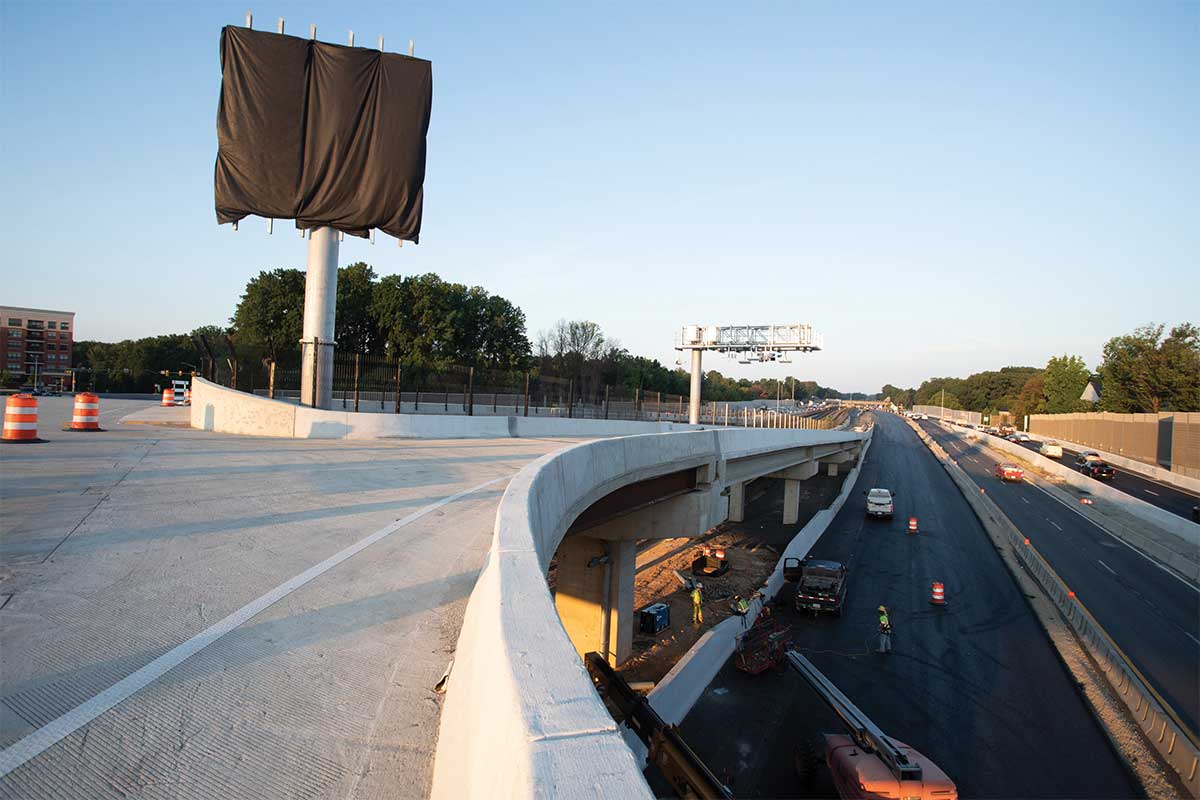
Quality of Life
Comments like Benedetto’s are exactly what worry Stewart Schwartz, executive director of the Coalition for Smarter Growth (CSG), an organization that advocates for walkable, bikeable, transit-oriented communities in the Washington, DC, region.
“We think the competitive future — the quality of life of Northern Virginia — really is at stake here,” he says.
Schwartz and CSG Senior Policy Fellow Bill Pugh argue that Northern Virginia won’t make real progress on tackling traffic or reducing carbon emissions, and thereby improving quality of life, until the region starts devoting the same level of investment and attention to building user-friendly transit and affordable housing that it puts into roadbuilding.
In an April report titled “On the Wrong Road,” the organization criticized the NVTA’s long-range plans for adding new lane miles to Northern Virginia roads at a rate that exceeds population growth by 1.5 times.
Pugh says this approach just encourages more car-dependent development farther out in the region, leaving many with no option but to drive more miles on area roads.
He points to walkable communities such as Falls Church, Old Town Alexandria, and Arlington’s Rosslyn-Ballston corridor as examples of better solutions to congestion problems.
“These areas have seen significant growth in population and businesses, but without the same increase in traffic, because they have provided options for people to get around and because they have clustered their housing and businesses in places where people can walk and take transit and travel shorter distances to the things they need to do,” Pugh says.

A Question That Hits Home
No matter how walkable a community is, if the teachers, nurses, bus drivers, and other workers who keep it going can’t afford to live there, roads will continue to be clogged and people will continue to experience miserable commutes.
That’s why Pugh and many other advocates for smarter growth would like to see discussion about solving the region’s affordable housing crisis become part of the transportation planning process.
“It can be very easy for people to think of housing and transportation as two separate things, but they are fundamentally related,” says Taylor Reich, a senior research associate with the Institute for Transportation and Development Policy, a nonprofit that works internationally on issues such as public transport and urban development.
A few Northern Virginia localities are trying to address this need. For example, Arlington’s Transit Oriented Affordable Housing Fund provides gap funding to build affordable homes near transit in the Columbia Pike area. Other major actors in the region, including the Washington Metropolitan Area Transit Authority and Amazon’s Housing Equity Fund, have also prioritized affordable housing development around transit hubs.
And some of the largest ongoing road projects in the region are designed to fit a future where more reliable transit options are available.
The I-66 expansion includes targeted improvements to interchanges that are hubs for transit. Express lane access points at Stringfellow Road and Monument Drive, for example, are meant to accommodate a future where Metrorail’s Orange Line extends past Vienna toward Centreville. The Stringfellow Road Park & Ride lot, which now has direct access to I-66 HOT lanes, is slated as a future Metrorail station location, although there are no firm plans at this time to build the extension.
While we’re seeing some progress, CSG’s Schwartz says federal and state funding programs still have a strong bias toward road expansion over transit spending.
“Transit projects have to jump through far more hoops than any road project,” he says, pointing out that only about 20 percent of total federal transportation spending goes toward transit, with the other 80 percent going to roadbuilding.
“How do we convince our departments of transportation to shift that money to a more sustainable approach?”
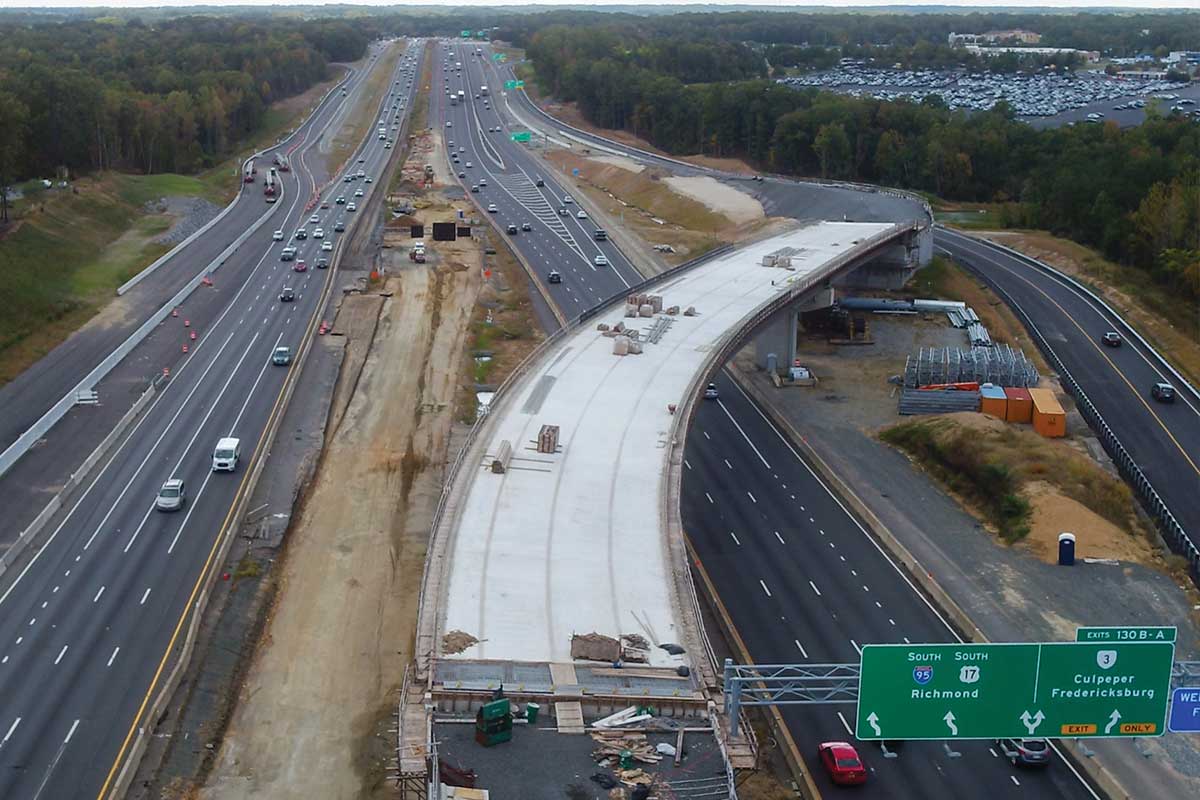
Light at the End of the Tunnel?
In the nearer term, VDOT officials are hoping drivers will see some tangible benefits from the major projects that will be opening in the coming months and years.
As work continues on the express lanes extension to Fredericksburg, new interstate lanes meant to help manage the potential backup at the end of the express lanes are already having an impact.
Ridgell says that since three new southbound lanes over the Rappahannock River opened in October 2021, the average speed during afternoon peak hours has gone from 20 miles per hour to nearly 60 miles per hour. Backups onto U.S. 17 in Stafford County at the ramp to southbound 17 have also decreased significantly, he says. Construction of a new northbound Rappahannock River crossing is expected to wrap up in 2024.
Farther north, VDOT estimates that the extended HOT lanes on I-495 will cut travel times for express lane users by up to 50 percent and reduce crashes by 20 percent.
As the final portion of the new I-66 HOT lanes opens, VDOT will be monitoring use of the park and ride lots and OmniRide bus service along the corridor to gauge whether the project is living up to its goal of turning I-66 into a truly multimodal transportation corridor.
“That’s why we call it Transform 66,” VDOT’s Shaw says of the project. “We want to transform how you think about commuting and getting in a carpool. The intent is really to encourage having those other travel choices.”
This story originally ran in our December issue. For more stories like this, subscribe to our monthly magazine.

